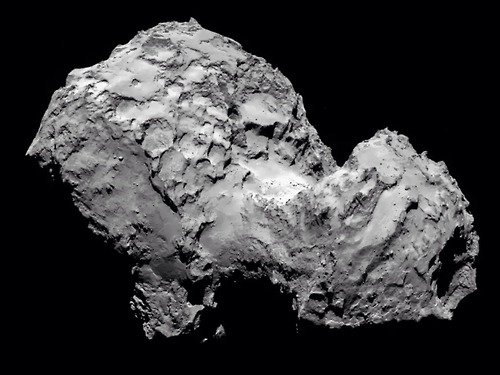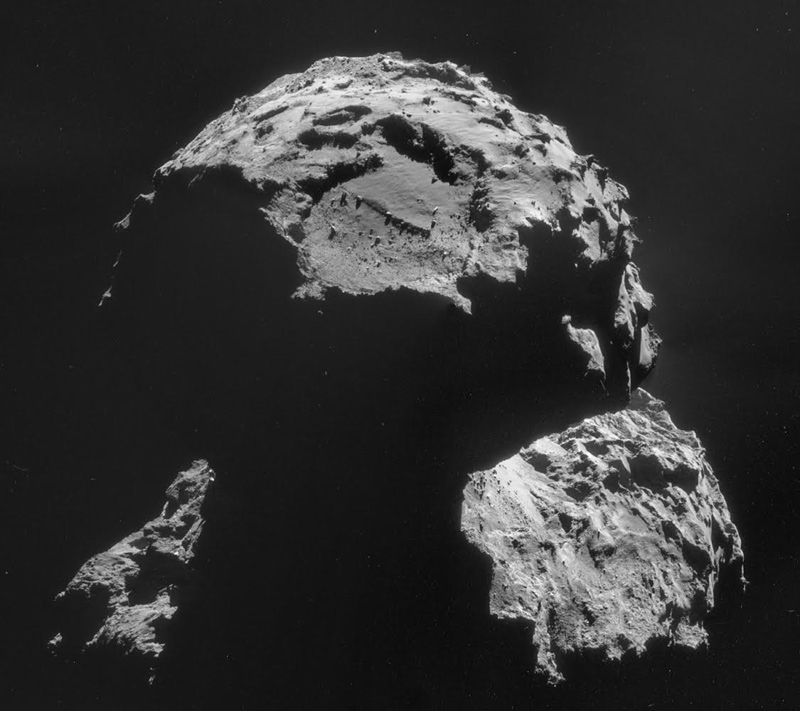
12 Nov The Rosetta Mission – A success story ten years in the making which has travelled 4 billion miles to unfold.
ESA’s Rosetta mission made history this morning in landing a spacecraft on a 20 trillion pound comet located 300 million miles away from Earth. Rosetta has been orbiting the comet since August this year anticipating the drop of the Philae lander following a ten year journey through the solar system. The purpose of this mission is to study a Jupiter-family comet ’67P/Churyumov-Gerasimenko’. The Philae is equipped with instruments for sampling the comet nucleus and capturing images of the environment, and was successfully deployed last night from the Rosetta after a four month orbit of observation and data collection which included identifying a suitable target for Philae to land and attach itself to.
The entire Rosetta concept was first conceived back in the 1970’s, approved in 1993 and launched in 2004, so this unbelievable tale of triumph has been a long time in the making. The descent of Philae from the Rosetta took seven hours in total, the landing which took place around 8:00am PST was a success although the harpoons which were meant to shoot into the ground anchoring Philae into the surface of the comet failed to fire.

ESA have said that the team is now assessing the failure of the Philae harpoons and plan to refire the harpoons in order to secure the attachment.
The theory which gives this expedition so much weight is that, contrary to the popular misconception that comets are simply destructive canon balls of doom, they could easily be the exact opposite. Comets pummelling the Earth might just be the reason there is life on Earth at all.
“This is a big step for civilization,” – Jean-Jacques Dordain, the director general of ESA.
Prior to the landing, Rosetta detected a musical sound omitted from the comet very similar to rapid water droplets falling from different heights giving range in its sound – there is no proven reason for the sound as of yet.
ESA scientists will spend the next couple of months processing and analysing whatever data is received from the instruments on Philae. To land on what is effectively a time capsule containing information which will assist us in understanding an early solar system is remarkable, and what makes this momentous occasion all the more astonishing, is the fact that construction materials of the Rosetta and Philae would be considered pretty dated by today’s standards. The successful landing is in itself a major accomplishment for ESA but aside from this mammoth feat, the research and exploration of this comet will undoubtedly contribute to a larger education and understanding for humankind as a whole through the revealing of the mysteries surrounding our solar system’s formation.
History has been made today, a massive congratulations is in order for all who contributed to this exciting and promising moment.
[Check out this stunning short film; a collaboration between ESA and Platige Image]


